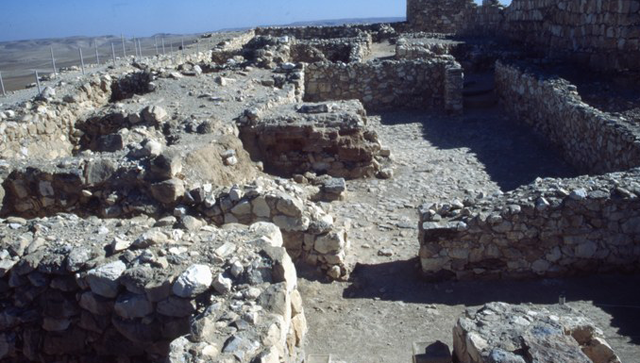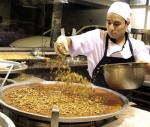You are here
Chariots played significant role throughout history, ancient warfare
By Saeb Rawashdeh - Sep 16,2024 - Last updated at Sep 16,2024

The king (recognizable by his distinctive hat) rides around the arena on a chariot shooting lions with arrows. His attendants fend off a lion that is attacking from behind (Photo of Jan Van den Crabben)
AMMAN – Chariots played a prominent role in traditions for different civilisations. In Hindu, Persian and Greek mythologies, some gods are depicted as charioteers. Usually, those are the supreme gods who are attributed to transition between day and night.
In the Bronze Age, chariots played an important role in ancient warfare, and Hittite Anitta’s text from the 18th century BC mentions 40 teams of horses at the siege of Salatiwara. However, the first certain attestation of chariots in the Hittite Empire dates to the late 17th century BC (Hattusili I).
As famous charioteers, Hittites developed a new design of chariots with lighter wheels and three warriors instead of two. One Hittite warrior steered the chariot while the second man was usually the main archer; the third warrior would either wield a spear or sword when charging at enemies or hold up a large shield to protect himself and the others from enemy arrows.
"Although there is no direct evidence for the involvement of chariots in siege operations, references to chariots in late Middle Bronze Age texts, their depiction in seals and sealings, and ceramic models of them from the start of the Middle Bronze Age warrant consideration of their military role during this period," noted Professor Aaron Burke.
He added that the emergence of the chariot and its presumed use in battle during the Middle Bronze Age also suggests that warfare consisted of more than the siege of cities during the first half of the second millennium.
The historical development of the chariot in the Near East and the role that the horse played in this development are thoroughly treated in the works of Mary Littauer and Joost H. Crouwel and P. R. S. Moorey (1986), Burke underlined, although “battle cars”, “straddle cars” and “platform cars” as Littauer and Crouwel have identified them, were all in use before ca. 1900 BC, it is incorrect to view these vehicles as chariots.
"The chariot, although certainly used in sport hunting, as indicated by Syrian seals, was also put to use in “warfare, in cult and, probably, as a parade and a status vehicle,” he added.
While such functions are, of course, well attested in Late Bronze Age seals, such as those from Alalae, Ugarit and Tell Abu Hawam, they are also attested in a number of seals and sealings with clear Middle Bronze Age dates, the professor from the University of California Los Angeles said.
"Of central importance to the development of the chariot is the issue of the domestication of equids in the Near East, since it has been established that the equids, which drew these chariots, were not themselves ridden at this time," Burke highlighted.
Nevertheless, the extent to which chariots were employed in warfare as early as the Middle Bronze Age remains in question, the professor added.
With respect to the chronological and spatial distribution of the chariot in the Levant during the Middle Bronze Age, ceramic chariot models are known from the northern Levant and northern Mesopotamia but are seemingly unattested in the southern Levant.
"Chariot models dated to the Middle Bronze Age have been found in the northern Levant at Ugarit, Tell Masin, Qatna and Hama," Burke said, adding that no substantive evidence for the use of the chariot during the Middle Bronze Age in the southern Levant has yet been adduced.
Evidence for the adoption of the chariot in Egypt by at least the end of the Middle Bronze Age has also recently come to light from the excavation of the monuments of Ahmose at Abydos, the historian underlined.
He noted that this evidence confirms that the chariot was already in use in the southern Levant, whence it was probably introduced to Egypt during the Hyksos period.
The use of the chariot in Egypt during this period marks the full incorporation of chariotry in pitched battles during the New Kingdom, when its use in warfare is first attested. Chariots had a devastating effect on enemy's infantry during confrontations in the open battlefields.
Although it has been suggested that even in earlier periods chariots were of some use in battle because horses could trample enemy foot-soldiers and disrupt their ranks, as Littauer and Crouwel rightly note, horses tend to avoid trampling humans.
"Hence the motif of the prostrate enemy beneath the hooves . . . must be interpreted as merely symbolic of victory, while in reality such bodies would be lying on the hither or further side of the teams," Burke underlined.
He added that it is now widely recognised that the true effectiveness of the chariot in battle was its capacity to provide a mobile platform for the use of the bow, particularly the composite bow.
Furthermore, the introduction of the chariot ca. 1900 BC coincided with the widening use of the composite bow, which was replacing the simple bow in military contexts.
The chariot provided a means by which an archer’s effectiveness could be maximised against troops massed for battle in the open field. In hilly terrain or around settlements built next to wadis or surrounded by walls—especially walls built on ramparts—the chariot was of no use, Burke underscored.
Related Articles
AMMAN — The study of the ancient warfare is often connected with study of available weaponry and fortifications recovered by archaeologists.
AMMAN — Among the oldest and most effective weapons of antiquity were simple and composite bows.Widely used during the Bronze Age, these wea
AMMAN — With the development of the first civilisations, the weaponry also improved and some of most popular weapons in the Bronze Age were














